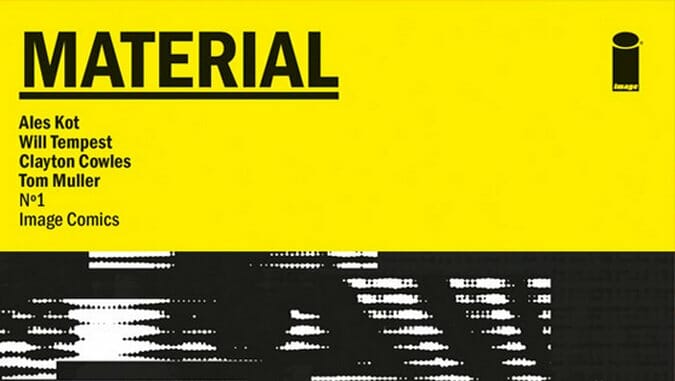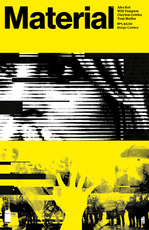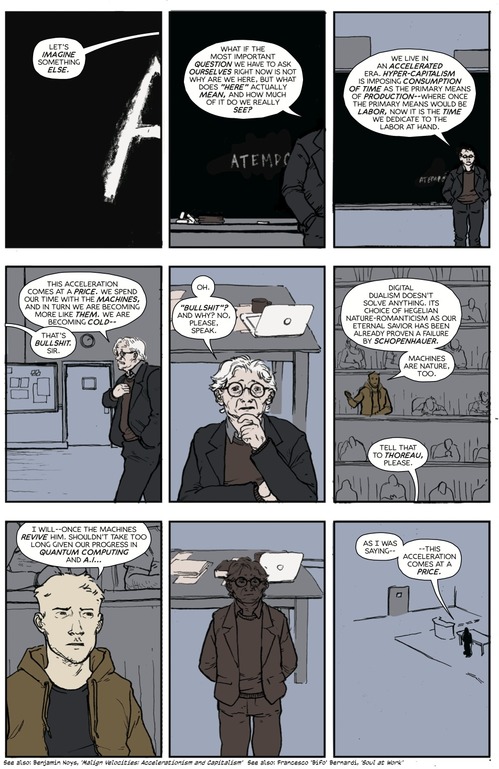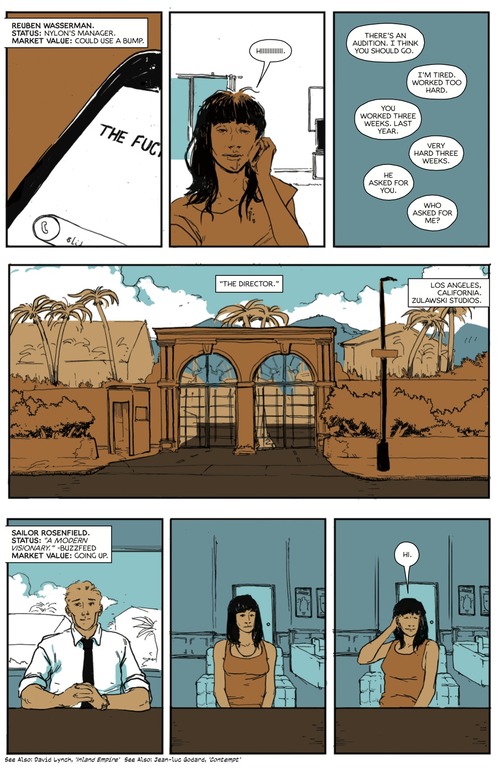Material #1 by Ales Kot and Will Tempest

Writer: Ales Kot
Artist: Will Tempest
Publisher: Image
Release Date: May 27, 2015
Material #1’s cover is what you’d call glitch art—a representation of a lag in the rendering capability of whatever mediates between us and some mysterious figure. It serves as a perfect entryway to the issue: something is amiss. A hiccup in the Matrix. Déjà vu.
 An MIT professor who looks like Noam Chomsky lectures a class: we’re becoming machines, he says. A student calls “bullshit!” The hot new actress is in a slump. She brandishes a gun and snorts lines of crushed up klonopin off a desk in an LA hotel room. A 15-year-old black child protests police brutality and the global devaluation of black lives. He’s struck down by an officer and his truncheon—the scene is all silence and rain. A Muslim man of unspecified ethnicity goes home after a literally tortuous experience in Guantanamo Bay. Inside, he consoled himself by psychically transposing his BDSM-lover into his captor’s place.
An MIT professor who looks like Noam Chomsky lectures a class: we’re becoming machines, he says. A student calls “bullshit!” The hot new actress is in a slump. She brandishes a gun and snorts lines of crushed up klonopin off a desk in an LA hotel room. A 15-year-old black child protests police brutality and the global devaluation of black lives. He’s struck down by an officer and his truncheon—the scene is all silence and rain. A Muslim man of unspecified ethnicity goes home after a literally tortuous experience in Guantanamo Bay. Inside, he consoled himself by psychically transposing his BDSM-lover into his captor’s place.
These are the beginnings of the four stories that steer Material, and they are explicated two pages at a time, cycling through and restarting. Each page is built on a nine-panel grid. Each story is color coded and easily identifiable. Structure dictates the ebb and flow of this comic, which appears to stand in stark contrast to the deconstructionist technique employed by Kot in previous works like Wild Children and Change. However, Jacques Derrida in Of Grammatology (Deconstruction’s opening salvo) remarks that the limits of structuralism are implicit in the foundational (and facile) notion that you can ever be exterior to the structures you’re parsing. This is Material #1 by Ales Kot, Will Tempest, Clayton Cowles and Tom Muller, and in this way it’s very much, or appears to be, the most honestly deconstructionist work in Kot’s oeuvre.


